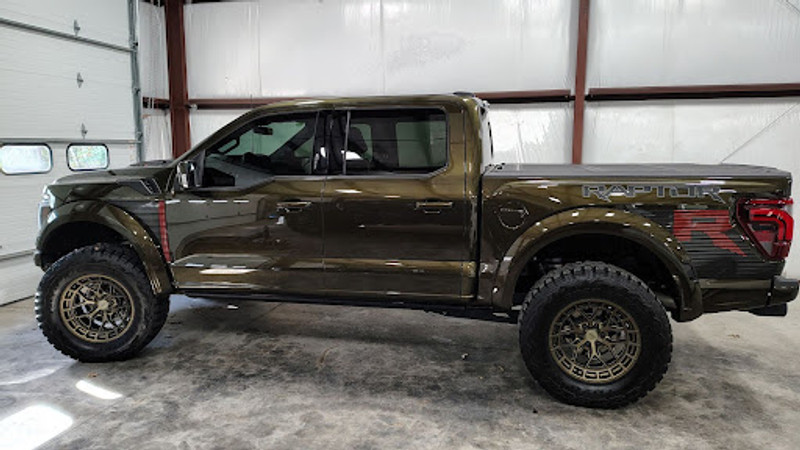Why Catch Cans Became a Must-Have Mod in the Truck Community
Posted by JLOSC on 2025 Oct 27th
If you spent time around trucks in recent years, you’ve seen the rise of catch cans. They’re not a vanity add-on. A well-designed oil separator keeps oily blow-by out of the intake path, which helps modern engines run cleaner for longer—especially on tuned or hard-worked trucks.
Why do performance trucks need an oil catch can?
All engines create “blow-by”—combustion gases that slip past the rings and into the crankcase. The PCV system routes those vapors back to the intake so they can be burned. The problem is that those vapors carry oil mist and moisture. Over time, they coat intake runners, intercoolers, and (on direct-injection engines) the backs of intake valves. That residue can harden into deposits and negatively affect performance. A catch can intercept the vapor stream, removing the oil and water, so mostly clean gas returns to the intake.
Direct-injection truck engines are particularly sensitive because the valves don’t get “rinsed” with fuel. Industry research has documented the tendency of GDI engines to form intake-valve deposits that can affect drivability over time. A catch can helps slow that process by reducing the amount that reaches the valves in the first place.
Why are catch cans trending in the truck community?
There are two reasons: modern engine design and real-world results. Forced-induction setups (turbo/supercharged) move a lot of air under load; any oil mist that sneaks through can leave a film on intercooler passages and intake plumbing. Oil film is a poor conductor of heat, so even a thin layer can work against charge-air cooling efficiency. Enthusiasts see what comes out at each drain interval—often a mix of oil and condensation—which makes the benefit tangible.
Do catch cans actually improve truck engine performance?
The goal is consistency and longevity, not a dyno miracle. By reducing oil contamination of the intake stream, you lower the chances of octane-diluting oil vapor entering the chamber and prompting the ECU to dial back timing. You also help the intercooler do its job by keeping its internal surfaces cleaner. The net effect is steadier performance and fewer drivability annoyances as miles add up.
Do mods like catch cans increase truck resale value?
Savvy buyers look for signs that a truck has been maintained thoughtfully. A quality catch can with clean plumbing and service records sends that signal. It doesn’t guarantee a price bump on its own, but for shoppers who know modern PCV/GDI issues, it can tip a good truck into “buy” territory—especially on popular performance models.
What truck owners say after installing a catch can
Owners tend to be persuaded by what drains out: an oily, often milky sludge (oil + moisture) that would have cycled through the intake. Many also report fewer cold-start hiccups and less oil residue in intercooler piping after installation on boosted applications. (Those observations line up with what we know about deposits and oil film.)
A proven fit: F-150 and Expedition applications, along with Chevy
If you’re running a late-model Ford, J&L’s vehicle-specific kit is a straightforward way to add protection. Our F150 oil catch can fits 2011–2025 F-150 models with 2.7L / 3.5L EcoBoost and 5.0L engines, as well as the 2018–2021 Expedition (passenger-side application). It’s designed for factory-look installation and easy service intervals. (See the product page for photos and details.) Chevy owners can also find oil catch cans with similar specifications and installation.
What to look for in a quality catch can
- Engine-specific brackets and lines so you’re not improvising the mount or hose routing.
- Effective perforated media to condense and separate vapor efficiently.
- Service-friendly can with an O-ring seal and clear access so you’ll actually drain it.
FAQs
Will a catch can void my warranty?
A catch can is a maintenance accessory. Under federal law, a manufacturer must show that an aftermarket part caused the issue to deny coverage. Always keep your stock parts incase you would like to return to stock for service work to avoid any troubles.
How often should I drain it?
Check at your 1000 miles after installation to set a baseline. Many owners drain every 2,000–3,000 miles; cold or humid climates may fill faster.
Do catch cans fix existing valve deposits?
No. They help prevent further buildup by reducing what reaches the intake. Existing deposits require a cleaning procedure.
Port-injection vs. direct-injection—who benefits more?
Both benefit, but GDI engines see the biggest upside because the intake valves don’t get bathed in fuel. SAE International
Can oil in the intercooler really hurt performance?
Oil film can insulate heat-transfer surfaces. Keeping the charge-air path cleaner supports more consistent intake temps. ScienceDirect
Is a catch can a power mod?
Think of it as a preservation mod. The payoff is steadier performance and fewer issues as miles climb, not an immediate horsepower gain.
Where should I start on my truck?
Use a proven, vehicle-specific kit so routing and fitment are right the first time. J&L offers applications on many of today's top-selling models.
Ford Truck Oil Separators
Chevrolet Truck Oil Catch Cans
GMC Truck Oil Catch Cans
Nissan Truck Oil Catch Cans
Ram Truck Oil Catch Cans
Toyota Truck Oil Separators
Ready to add one?
If you’re maintaining a hard-working truck or even just a family hauler, an oil separator is low-effort insurance. For Ford applications, start with J&L’s kit for 2011–2025 F-150 (2.7L/3.5L/5.0L) and 2018–2021 Expedition—it’s built for an OEM-style fit and easy service intervals.









